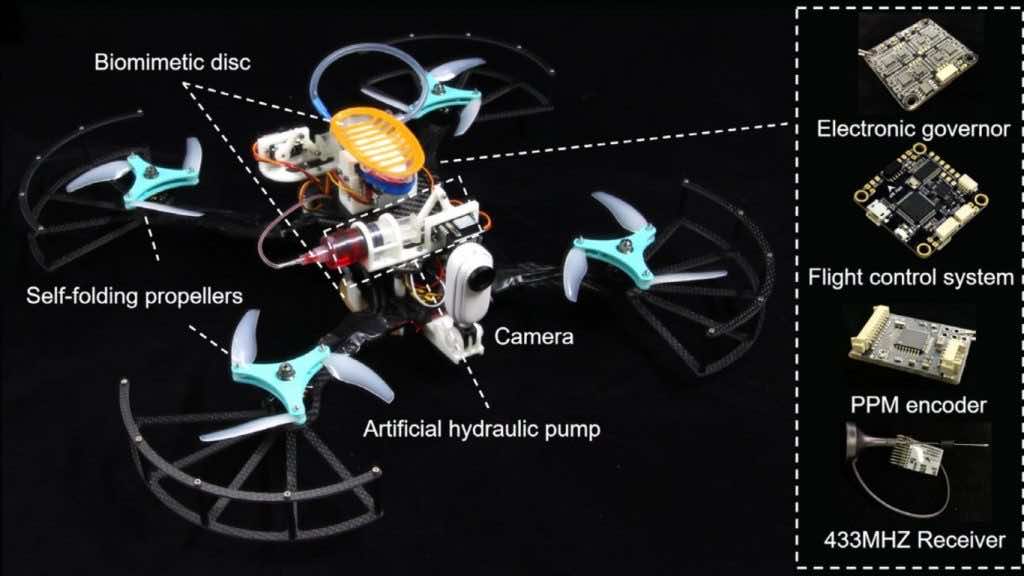Researchers from Beihang University have developed a robotic drone that can operate underwater just as easily as in the air without modifications in between.
The drone is waterproof and has a set of self-folding propellers that collapse when operated at lower speeds underwater to efficiently maneuver the drone when submerged. They then automatically extend as the drone transitions out of the water and takes to the air. It can transition in a third of a second and can complete seven consecutive water-air transitions in 20 seconds.
It has built-in redundancies that allow it to stay adhered to surfaces even with partial contact inspired by remora fish.
The team was able to create an artificial version of the remora fish’s suction disc through a four-layer approach. They paired an ultra-flexible layer on top with more rigid structures beneath, along with a layer with a network of small channels that can be inflated when pumped full of liquid, replacing living muscle tissue to engage the lamellae structures to further enhance suction.
Like a remora fish, the drone could, at least in theory, find itself an underwater host (one not immediately scared away by its spinning propellers) and attach itself for a free ride, requiring just the suction mechanism to be powered, which is a minimal drain on its onboard batteries.
A more plausible use of the suction mechanism is as a way to temporarily perch the drone somewhere with an ideal vantage point for long-term observations. The drone could attach itself to a rock or log and turn off its motors, while still powering sensors and cameras. The same thing could be done above the waterline, with the drone flying up and sticking itself to the side of a tall building or the underside of a wind turbine’s nacelle, and carrying out measurements and other data collection without the use of its battery-draining motors.

